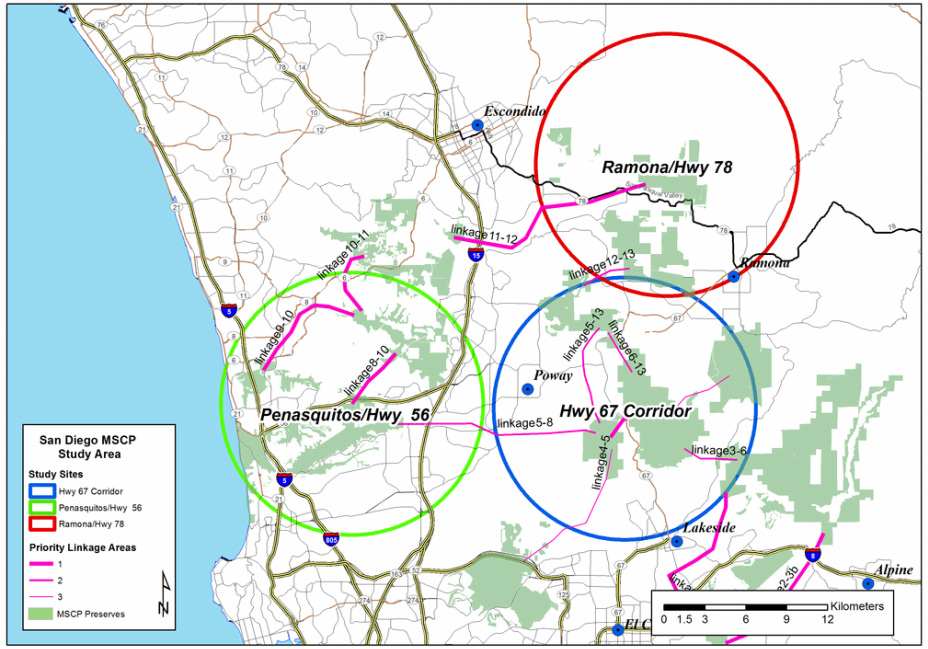Using bobcat movement to assess landscape linkages for San Diego County’s open spaces
Project Lead: Megan jennings
We have recently completed data collection and preliminary analysis on the research questions that expanded our San Diego County bobcat work. This project, a collaboration between SDSU and USGS, aims to evaluate current landscape connectivity within key areas of San Diego County’s open space network and assess its ability to protect biodiversity in the face of climate change using bobcats as a model species. Our objective is to build a solid foundation to inform monitoring and planning efforts for the San Diego Multiple Species Conservation Plan (MSCP) and South Coast Missing Linkages Program (SCMLP). We examined physical and functional connectivity (i.e. is it there, and is it something animals will actually use) between several individual preserves and across the preserve network from west to east. Our focus was on preserves along Highway 56 in the west, Highway 67 inland, and Highway 78 to the east. We have been investigating use of the preserves as core habitats and using GPS collar tracking, remote cameras, and roadkill collection to identify pinch points and/or movement barriers. Tracking data were run through movement models to evaluate connectivity across the remainder of the preserve network.
When bobcats are captured, we collected genetic samples so we may consider functional connectivity (i.e. when an animal gets there, does it reproduce and provide gene flow) across the open space network. In the summer of 2012, I ran samples in the genetics lab of Dr. Holly Ernest at UC Davis. I previously worked with Dr. Ernest during my year at Davis, when I spent time testing mountain lion microsatellite primers for use with bobcat scat and tissue samples. We used some of these primers, as well as domestic cat markers, to genotype all sampled animals and evaluate dispersal and genetic differentiation across our study sites.
Click here to access our final project report on this preliminary work to the San Diego Foundation, one of the primary funders for this work.
When bobcats are captured, we collected genetic samples so we may consider functional connectivity (i.e. when an animal gets there, does it reproduce and provide gene flow) across the open space network. In the summer of 2012, I ran samples in the genetics lab of Dr. Holly Ernest at UC Davis. I previously worked with Dr. Ernest during my year at Davis, when I spent time testing mountain lion microsatellite primers for use with bobcat scat and tissue samples. We used some of these primers, as well as domestic cat markers, to genotype all sampled animals and evaluate dispersal and genetic differentiation across our study sites.
Click here to access our final project report on this preliminary work to the San Diego Foundation, one of the primary funders for this work.



